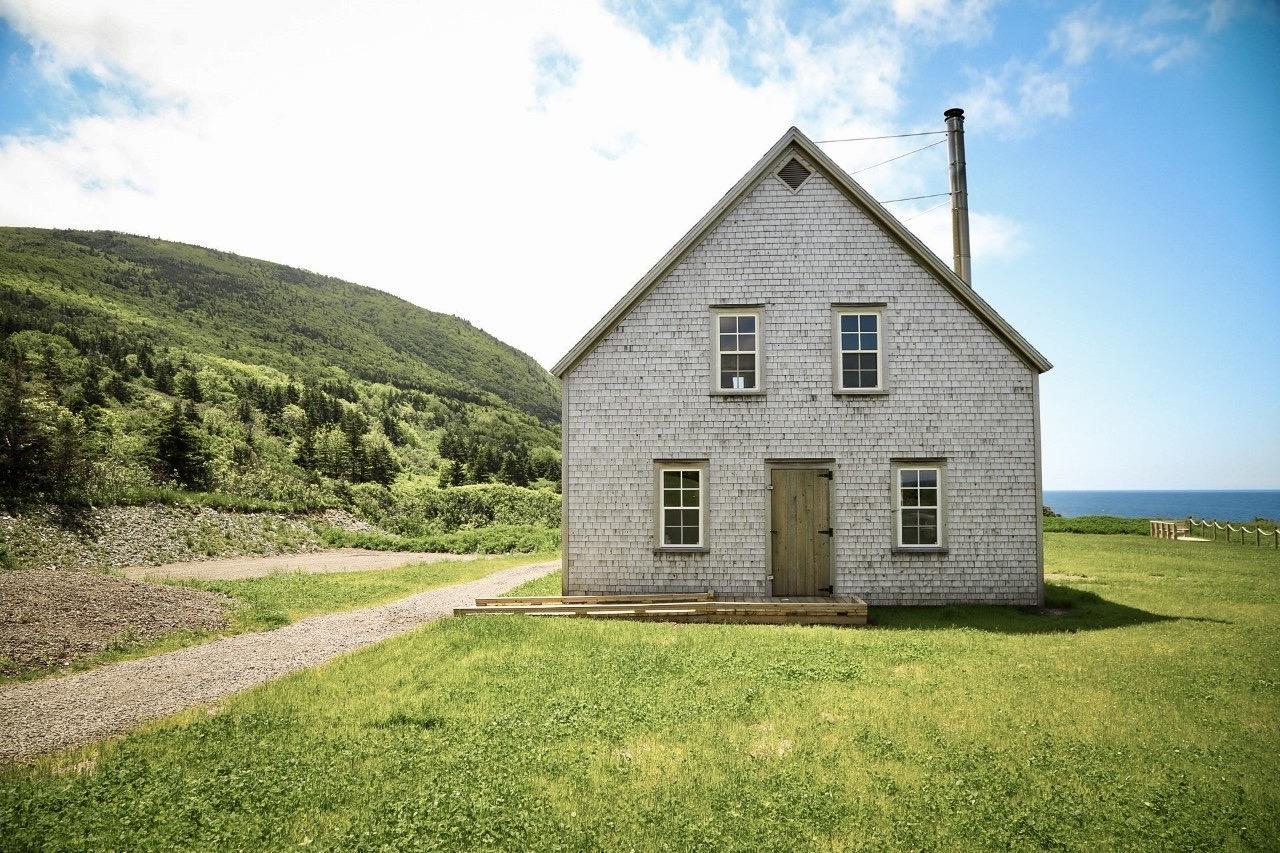
Walk-in campsites feature picnic tables, an enclosed fire pit, and spectacular views of the Gulf of Saint Lawrence. The campground features 42 tent sites, four of which are accessible with parking spots and an accessible picnic table/Parks Canada
Cape Breton Highland National Park has unveiled its newest visitor offer — Mkwesaqtuk/Cap-Rouge Campground. The $7-million ($5.5-million USD) project, funded through the Federal Infrastructure Investment Program, offers a new coastal camping experience along the world-famous Cabot Trail.
A community celebration to mark the occasion was held June 29 by Parks Canada and partners from La Société Saint-Pierre and the Parks Canada-Unama'ki Advisory Committee.
Pronounced “Mm kwas sock took,” Mkwesaqtuk/Cap-Rouge Campground opened to visitors on July 1. The front-country campground has a private, backcountry feel, with ocean vistas and views of the highlands and Cabot Trail cliffs. There are 47 walk-in sites, including five oTENTiks and six accessible campsites, with treed nooks to create a feeling of remoteness and privacy.
In the design, Parks Canada integrated climate change mitigation and adaptation solutions, including off-grid solar powered infrastructure and the use of native vegetation to build stable, climate resilient slopes. The federal government is working towards net-zero emissions by 2050.
“The aptly named Mkwesaqtuk/Cap-Rouge Campground honours the expropriated Acadian community and the Mi'kmaq connections to the region,” Jaime Battiste, Parliamentary Secretary to the Minister of Crown-Indigenous Relations and Member of Parliament for Sydney-Victoria, said in a news release.

The Interpretation House was built in the Acadian architectural style and will host interpretation activities for visitors to learn about the Acadian and Indigenous connections to the region/Parks Canada
Sharing the Mi'kmaw perspective “enriches and enhances any story told about the landscape of Nova Scotia,” Chief Wilbert Marshall, Lead, Culture, Heritage & Archaeology Portfolios for the Assembly of Nova Scotia Mi'kmaw Chiefs, said in a news release.
La Société Saint-Pierre, on behalf of the community of Chéticamp and especially the expropriated families and their descendants, said it was pleased to have this part of its troubled history told and forever remembered for future generations.
“This beautiful location was the home of many of our Acadian families, and we are proud to honour them today on this official opening,” said Napoléon Chiasson, president of La Société Saint-Pierre
Cape Breton Highlands is in northern Cape Breton Island in Nova Scotia. Visitors can hike, cycle, swim, ocean kayak, picnic in quaint coves and experience friendly local culture in the surrounding communities.

Mkwesaqtuk/Cap-Rouge Campground is Cape Breton Highlands National Park’s newest and greenest campground. This field of solar panels will power the campground’s electrical grid/Parks Canada
In August 2015, flash flooding triggered breaches in the Chéticamp River watershed, causing significant damage to the Chéticamp campground. The risk of future flood events determined that the lower Chéticamp campground be closed and the site relocated. The Trout Brook (Ruisseau des Maurice) day-use area was then selected as the location for a new campground.
The Mkwesaqtuk/Cap-Rouge Campground honors Indigenous connections to this region and commemorates the Acadian peoples whose lands were expropriated for the creation of the national park in 1936. Parks Canada collaborated with members of La Société Saint-Pierre and the Parks Canada-Unama'ki Advisory Committee in selecting a name that will encourage Canadians to learn about the full scope of our shared history.
Mkwesaqtuk is a Mi'kmaq word that describes a place or feature that distinctly changes to red. This Mi’kmaq expression would have been used to describe the coastal area that Acadians later called Cap-Rouge, on the western side of the park. The Mi’kmaw and French names capture the intent and spirit of Etuaptamumk, also known as the Two-Eyed Seeing approach, which combines Mi'kmaq and Western perspectives. The Mi'kmaw-French name of the campground honors the history of the location, and offers opportunities for celebrating Mi'kmaq and Acadian cultural and linguistic connections.

 Support Essential Coverage of Essential Places
Support Essential Coverage of Essential Places




Add comment